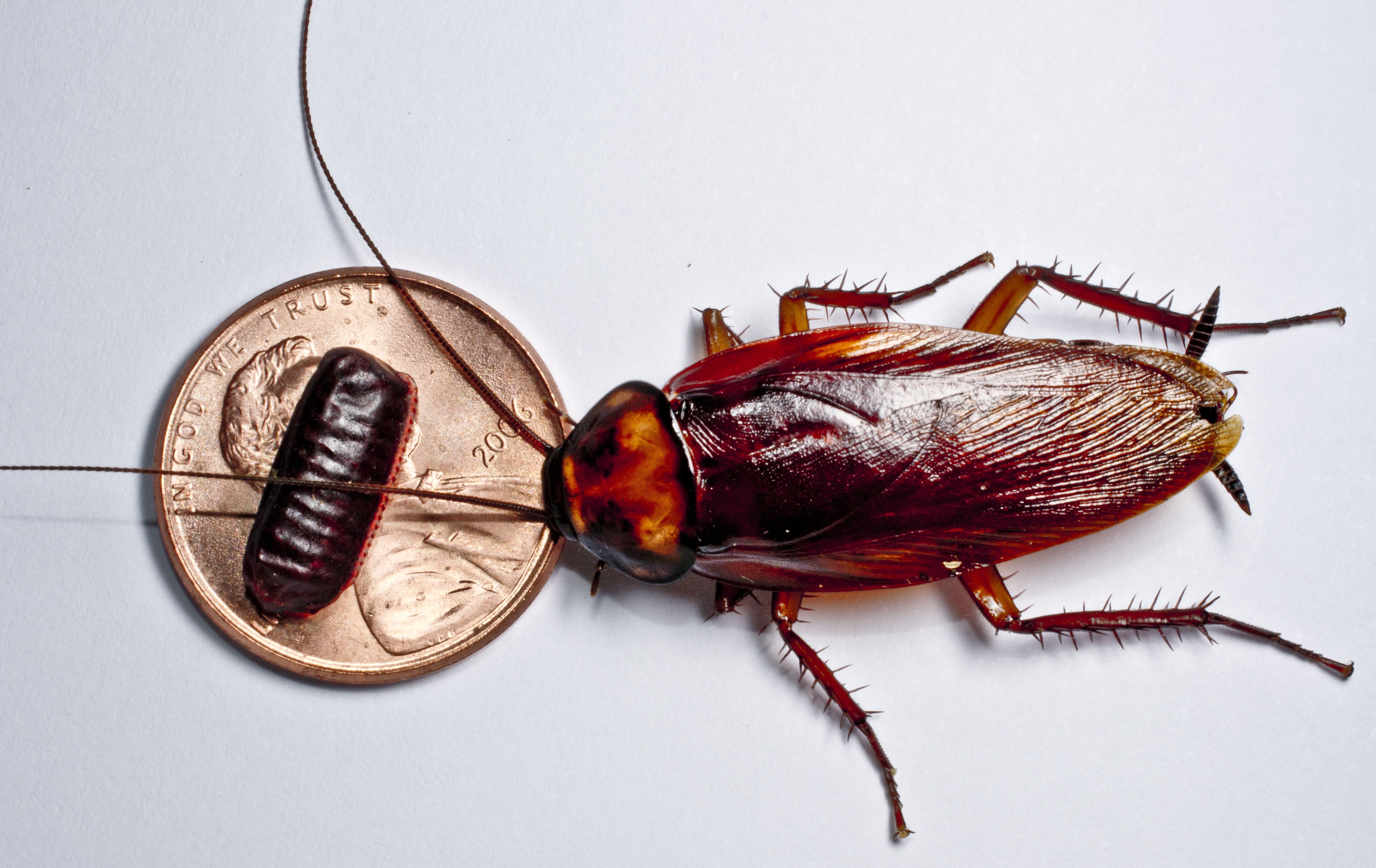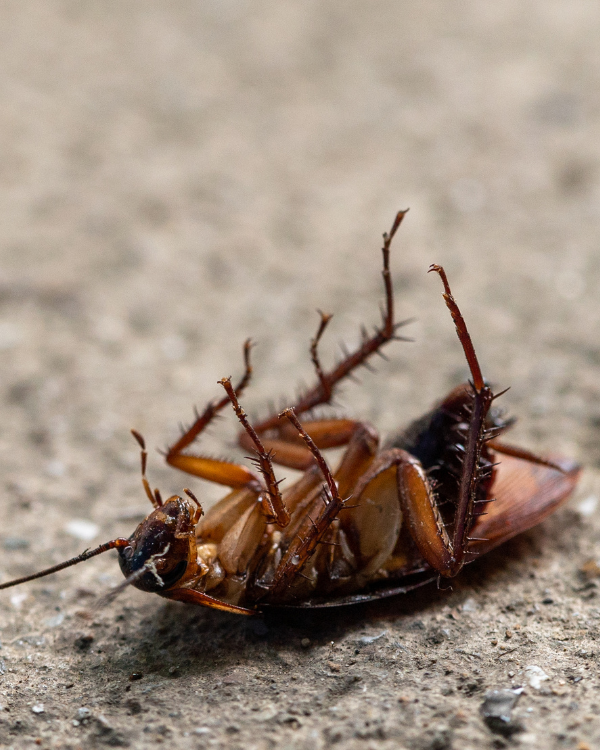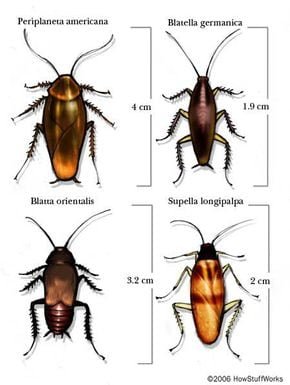Cockroaches can see and have compound eyes that detect light and dark. Their vision helps them navigate their surroundings.
Cockroaches are equipped with compound eyes that enable them to see light and dark, allowing them to navigate their environment effectively. Despite being primarily nocturnal creatures, their visual capabilities play a crucial role in their survival and behaviors. Understanding how cockroaches perceive the world through their eyes provides valuable insights into their adaptive nature and evolutionary strategies.
Let’s delve deeper into the fascinating world of cockroach vision and explore how these resilient insects utilize their visual senses to thrive in various environments.
Unveiling The Truth About Cockroach Vision
Discover the fascinating truth about cockroach vision – yes, they can see! Cockroaches possess compound eyes that can detect light and dark, enabling them to navigate their environment with surprising efficiency. This unique ability sheds light on their remarkable survival instincts.
Cockroaches have been around for millions of years, and it’s no secret that they are one of the most resilient creatures on the planet. One question that has puzzled many is whether cockroaches can see. In this article, we will be delving into the world of cockroach vision and uncovering some of the mysteries surrounding it.Insights Into Cockroach Vision
Cockroaches have two types of eyes, simple and compound. The simple eyes, also known as ocelli, are located on top of the head and are used to detect light and dark. On the other hand, the compound eyes, which are the main eyes, are made up of thousands of tiny lenses that allow the cockroach to see a wide range of objects and movements.Understanding Mosaic Vision In Cockroaches
Cockroaches have what is known as mosaic vision, which means that each lens in their compound eyes sees a small part of the overall image. The brain then combines these images to create a complete picture. This allows cockroaches to see movement in their peripheral vision, making them very good at detecting predators.It is fascinating to note that cockroaches can also see in very low light conditions. They do this by accumulating light signals over time, which helps them to see in near-pitch black conditions.In conclusion, cockroaches have evolved to have a unique and fascinating visual system that allows them to survive in a wide range of environments. Their mosaic vision and ability to see in low light conditions are just a few of the many adaptations that have made them such successful creatures.Credit: www.quora.com
Factors Affecting Cockroach Vision
Cockroach vision is influenced by light and dark cues. Their compound eyes help them see shapes and movements. They can navigate effectively in low-light environments.
Factors Affecting Cockroach VisionCockroaches are known for their exceptional adaptability and survivability, and a key aspect of their success is their vision. Understanding the factors that affect cockroach vision can provide valuable insights into their behavior and ways to control their presence in human habitats. The impact of light conditions and the role of different light colors play a crucial role in determining how cockroaches perceive their environment.Impact Of Light Conditions On Cockroach Vision
Light conditions have a significant influence on the vision of cockroaches. These nocturnal creatures are highly sensitive to light and tend to be more active in the dark. In brightly lit environments, cockroaches may exhibit a more cautious and evasive behavior, seeking shelter in dark and secluded areas. Conversely, in low light conditions, they are more likely to explore their surroundings and forage for food.The Role Of Different Light Colors In Cockroach Vision
The perception of different light colors by cockroaches also plays a crucial role in their visual capabilities. While they cannot see in red light, cockroaches have been found to have a preference for green light. This preference for green light may be attributed to the specific photoreceptors in their compound eyes that are more sensitive to this wavelength. Understanding the role of different light colors in cockroach vision can help in developing effective strategies for controlling their behavior and presence.By considering these factors that affect cockroach vision, it becomes evident that their visual perception is intricately linked to their behavior and adaptation to different environments. Understanding the nuances of cockroach vision can provide valuable insights for pest control measures and enhancing our understanding of these resilient creatures.Unique Abilities Of Cockroach Vision
When it comes to the unique abilities of cockroach vision, these resilient insects possess some remarkable visual capabilities that set them apart from other creatures. Understanding the intricacies of cockroach vision sheds light on their impressive adaptability and survival skills.
Cockroaches’ Ability To See In Near-darkness
Despite being primarily nocturnal creatures, cockroaches can see remarkably well in near-darkness, a feat that sets them apart from many other insects. Their ability to navigate and find food sources in low-light conditions is a testament to their exceptional visual prowess.
Pooling Of Light Signals: A Fascinating Cockroach Superpower
One of the most intriguing aspects of cockroach vision is their capacity to pool light signals over time, allowing them to see in near-pitch black conditions. This remarkable superpower enables them to effectively gather and process minimal light, giving them a distinct advantage in dark environments.

Credit: thepestrangers.com
Comparing Cockroach Vision To Human Vision
Cockroaches have compound eyes that can detect light and dark, providing limited vision compared to humans. They rely more on touch and smell for navigation. Cockroaches can see well in green light but struggle in red light, showcasing their unique vision capabilities.
Cockroaches are known to be one of the most resilient and adaptable insects on the planet. Their unique ability to survive in harsh conditions is attributed to their impressive senses, including vision. While humans have a relatively advanced vision system, it is essential to understand the differences between cockroach vision and human vision to appreciate how cockroaches see the world around them.Differences In Color Perception Between Cockroaches And Humans
Cockroaches and humans have different color perception abilities. Humans have three types of color receptors in their eyes that enable them to see a wide range of colors. On the other hand, cockroaches have only one type of color receptor, which means they have limited color vision. They can see some colors, but their color vision is not as advanced as humans.Exploring The Range Of Vision In Cockroaches
Cockroaches have compound eyes that consist of several thousand lenses, allowing them to see a wide range of angles simultaneously. However, their vision is not as sharp as humans, and they cannot see fine details. They have poor visual acuity and cannot see objects clearly beyond a few inches. Cockroaches can also detect changes in light intensity and movement, making them highly sensitive to their surroundings.In conclusion, cockroaches have a unique vision system that is adapted to their survival needs. While their color vision and visual acuity are not as advanced as humans, they make up for it with their ability to detect movement and changes in light intensity. Understanding how cockroaches see can help us appreciate their remarkable adaptability and resilience.Interaction Of Cockroaches With Their Environment
When it comes to the interaction of cockroaches with their environment, it is crucial to understand how these resilient insects perceive and respond to stimuli around them. From detecting human presence to reacting to auditory cues, cockroaches showcase remarkable adaptability in their surroundings.
Detecting Human Presence: Can Cockroaches See Humans?
Cockroaches, despite their reputation for being elusive pests, possess a unique ability to detect human presence through their keen sense of vision. These insects rely on their compound eyes to perceive light and movement, allowing them to quickly react to potential threats in their environment.
Impact Of Auditory Stimuli On Cockroach Behavior
Aside from visual cues, cockroaches also exhibit sensitivity to auditory stimuli, influencing their behavior and movement patterns. Certain sounds can trigger a response in cockroaches, causing them to alter their paths or seek shelter to avoid perceived danger.
Debunking Myths About Cockroach Vision
Cockroaches have compound eyes and can see light and dark. They cannot see in complete darkness but are sensitive to green light. Their ability to accumulate light signals allows them to see in near-pitch black conditions, giving them a form of night vision.
Addressing The Myth Of Cockroach Blindness
Cockroaches have long been associated with blindness due to their nocturnal behavior and preference for dark, damp environments. However, this is far from the truth. Contrary to popular belief, cockroaches are not blind. In fact, they possess a remarkable visual system that enables them to navigate their surroundings with surprising accuracy.
Clarifying The Misconceptions About Roaches’ Visual Abilities
Misconceptions about roaches’ visual abilities have perpetuated the idea of their blindness. It’s essential to clarify that cockroaches have compound eyes that provide them with a wide field of view. While their vision may not be as advanced as that of humans, cockroaches are capable of detecting light and darkness with their compound eyes, allowing them to avoid predators and locate food sources.
Through extensive research, scientists have discovered that cockroaches can see in near-pitch black conditions by accumulating light signals over time, demonstrating their remarkable adaptability to low-light environments.
Practical Implications Of Cockroach Vision
Cockroach vision has practical implications as they can see in near-darkness by pooling light signals, aiding their survival and navigation. Understanding their vision can lead to innovative pest control strategies and inspire new technologies for low-light visual systems. This unique ability sheds light on the fascinating adaptations of these resilient creatures.
Utilizing Cockroach Visual Abilities For Pest Control
Developing Strategies To Mitigate Cockroach Sight Sensitivity

Credit: pestpatrol.com
The Future Of Research On Cockroach Vision
Research on cockroach vision continues to evolve, unlocking fascinating insights into the visual capabilities of these resilient insects. The future of studying cockroach vision holds promising avenues for scientific exploration.
Emerging Technologies For Studying Cockroach Vision
New technologies are revolutionizing the study of cockroach vision, offering researchers innovative tools to delve deeper into the intricate visual system of these creatures. From advanced imaging techniques to neurobiological sensors, technology is enhancing our understanding of how cockroaches perceive the world around them.
Potential Applications Of Understanding Cockroach Vision In Other Fields
Insights gained from studying cockroach vision have the potential to transcend beyond entomology, influencing various other fields. Understanding how these insects process visual information could inspire advancements in robotics, artificial intelligence, and even medical imaging technologies.
Frequently Asked Questions
Can Cockroaches See People?
Cockroaches can see people but are more sensitive to movement and light than details.
What Does Cockroach Vision Look Like?
Cockroaches have compound eyes that allow them to see light and dark. They cannot see in red light, but they see quite well in green light. They also have the ability to see in near-darkness by pooling light signals over time.
Are Roaches Afraid Of Humans?
Yes, cockroaches are afraid of humans and see us as predators triggering their instinct to scatter away. However, they dislike strong and distinctive scents such as citrus, peppermint, lavender, and vinegar.
Conclusion
Cockroaches may fear humans due to their predatory instinct, but they can also detect scents like citrus to avoid us. While they may not actively seek out human contact, a severe infestation could lead them to enter sleeping areas in search of food.
Understanding their vision helps in effective pest control strategies.
Related posts:

I’m MD Tanvir, and I bring years of expertise gained from working closely with pest control companies to the forefront. My journey in the industry has inspired me to launch Bug Battler, a platform aimed at equipping people with the know-how to combat pests autonomously. Through Bug Battler, I aim to empower individuals with practical insights to tackle pest infestations effectively.

